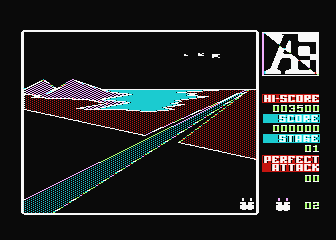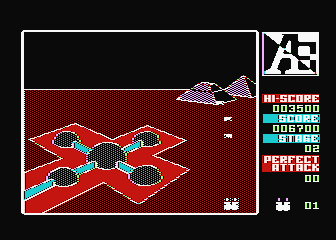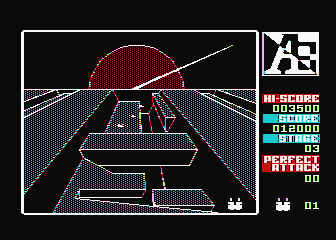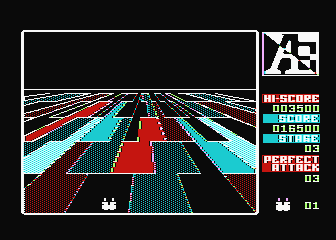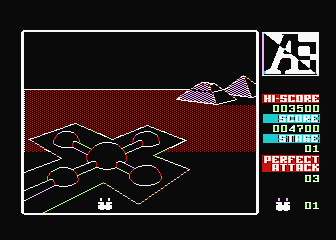|
|
A.E.
|
Name:
|
A.E. |
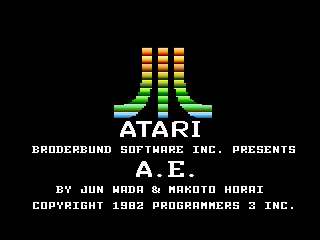 |
| Company: | Atari | |
|
Model #:
|
N/A | |
|
Programmer:
|
Unknown | |
| Year: | 1984 | |
|
Released?
|
No
|
|
|
Notes:
|
Original game by Jun Wada and Makoto Horai. Licensed from Broderbund |
A port of the classic computer game, A.E. is a most unusual 5200 prototype. It was never announced by Atari nor was it mentioned in any internal documents. In fact A.E. just appeared out of the blue one day when a collector found a copy in a box of old 5200 prototypes. Why Atari was considering porting a two year old computer game to the 5200 is unclear, but the results were interesting.
A.E. is an arcade style shooting game in which you have to shoot down waves of flying stingrays (yes I said stingrays) in order to save your planet. Why the programmers chose flying stingrays as your enemy is anybody's guess, but according to the instructions they're supposed to be some sort of pollution fighting robot that has gone out of control. According to the back of the box, A.E. is supposedly the Japanese word for 'ray' as in manta ray or stingray. However on the title you'll notice that A.E. appears to be some sort of acronym with periods between the letters. This is because the manual says A.E. stands for Anti-Environmental Encounter. Why the box and the manual are at odds is anyone's guess.
At the start of each stage, the background is actually drawn by the computer and the filled in before the action starts. While this effect is very interesting, it seems to take an eternity to finish and the novelty wears off quickly. The resulting pause between stages really distracts from the action, and makes an ordinarily fast paced game seem very slow. The graphics themselves are rather bland and colorless, consisting of dithered textures rather than bright solid shapes. On the whole it looks as if the graphics were copied directly from the Apple version, which is sad considering the 5200 was capable of so much more. On the bright side the 3-D effect of the backgrounds shows up nicely making for some interesting looking battlefields.
Once the stage starts a formation of stingrays will fly out of the background and zip around the screen. You must completely shoot down three of these formations before you can move on to the next stage. The shooting scheme in A.E. is a little unique. Rather than rapidly hitting the fire button to launch shots, you must instead press and hold the fire button. Once the shot gets to the height you want, simply release the fire button and the shot will explode destroying all the aliens near it (like Missile Command). Aiming and timing the shots takes a bit of getting used to, but adds to the charm and challenge of the game. If you don't shoot down the formation in time the remaining stingrays will run away and a new formation will come after you.
There are only four different stages in the 5200 version as opposed to five in the Atari 800 disk version (and eight in the Apple II original), but since the game had to be reduced from 48K to 16K sacrificing some of the stages was necessary. Reducing the amount of available memory also increased the drawing times for the stages dramatically, but I find it amazing that they were able to keep the drawing effect at all. A.E. also sports some pretty cool tunes at the beginning of each stage which makes up for the rather sparse sounds.
While A.E. may have been a decent disk based computer game, porting it to a cartridge based "Arcade" machine wasn't a good idea. The graphics and gameplay, while decent, just aren't up to 5200 standards. The painful draw times also slow down the action, putting a damper on the game. It's interesting to note that according to internal documents, Atari was porting A.E. themselves instead of engaging Broderbund to do it. Atari did the same with Choplifter, which ended up being one of the final games released for the 5200.
| Version | Cart Text | Description |
| ?????? | Almost complete. Missing some minor finishing touches | |
| 1/4/84 | A.E. 1/4/84 | Final Version? |
| 1/13/84 | A.E. 1-13 |
Final Version? |

